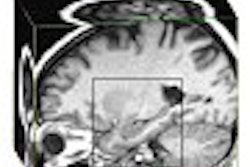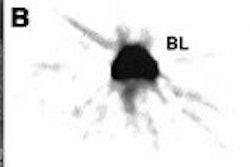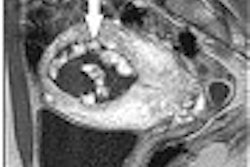(Ultrasound Review) Researchers in Israel evaluated the role of ultrasound imaging as a secondary diagnostic modality in women with mammographically dense breasts. According to Dr Pavel Crystal and colleagues, increased breast tissue density "has been reported both as a cause of false-negative findings on mammography and as an indicator of increased breast cancer risk." Their research was published in the American Journal of Roentgenology.
Over a two-year period, they studied 1,517 women with dense breast tissue and normal mammographic results. All women were asymptomatic and had no significant findings on physical examination. Women with a first-degree relative with breast cancer were considered at high risk, and there were 318 high-risk patients in this study. Seven breast cancers were detected, and four of these were in the high-risk group. The baseline detection rate was 0.25% compared with 1.3% for the high-risk group of women.
They speculated that the mammography-screening program would subsequently have detected the cancers detected sonographically.
"If one takes into consideration that interval breast carcinomas tend to be more lethal, then their early detection may substantially reduce mortality rates," they wrote. There was one intermediate-grade tumor with associated lymph node involvement, and four high-grade tumors diagnosed in this study. According to the authors, "the preclinical detection in these five patients was especially important, and in 71% of cancers detected in our study, vital lead time was gained by screening sonography."
The authors recommend using ultrasound imaging for breast cancer screening in women at high-risk that had dense breast tissue on mammography. "We show that screening sonography in cases of mammographically dense breast tissue permits the effective detection of otherwise occult small breast cancers," they concluded.
In women at high-risk for developing breast cancer, their 1.3% cancer-detection rate was significantly higher than the acceptable detection rate for screening mammography, they reported. They did not review the reproducibility of these findings or the cost-effectiveness of their recommendations, but suggested further research in these areas was warranted.
Using sonography to screen women with mammographically dense breastsPavel Crystal, et. al.
Department of radiology, Soroka University Medical Center, faculty of health sciences, Ben Gurion University of the Negev, P, Beer Sheba, Israel.
AJR 2003 July; 181:177-182
By Ultrasound Review
August 20, 2003
Copyright © 2003 AuntMinnie.com



















